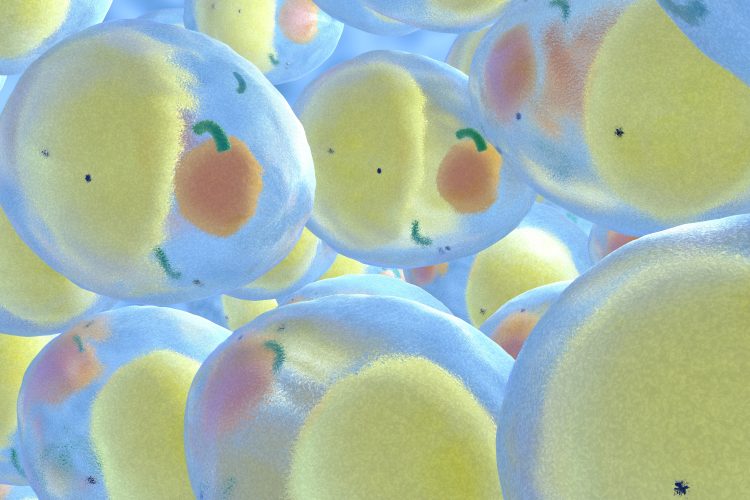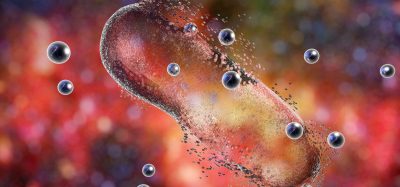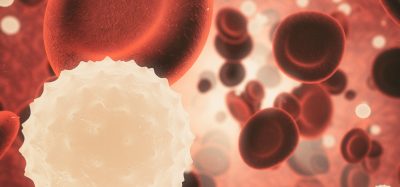New compound blend reverses sugar damage to tackle ageing and obesity
Posted: 24 October 2025 | Drug Target Review | No comments yet
Scientists have developed a compound blend that reverses sugar-related cellular damage in mice, which could lead to future therapies to slow ageing and treat metabolic diseases.


The Maillard reaction causes sugars to bind with proteins to form sticky, brown compounds through a process called glycation. This reaction has been increasingly linked to obesity, diabetes and accelerated ageing.
Researchers in the Kapahi Lab have found a way to counter this process in mice using a combination of compounds designed to reduce glycation. Their study shows that this treatment – a blend of nicotinamide, α-lipoic acid, thiamine, pyridoxamine and piperine, dubbed Gly-Low – reduced hunger, improved insulin sensitivity and extended lifespan by lowering levels of advanced glycation end-products (AGEs).
“Once formed, AGEs are hard to remove, as we age our defences against glycation weaken,” said senior scientist Professor Pankaj Kapahi. “Scientists have long suspected that AGEs accelerate many age-related diseases. Our results provide a strong proof-of-concept that glycation isn’t just a bystander in ageing; it may be a modifiable target to help people live healthier, longer lives.”
Rewiring hunger signals
The researchers examined how Gly-Low influenced metabolism and feeding behaviour in both diabetic and non-diabetic mice. They discovered that the compounds altered ghrelin signalling in the hypothalamus – ghrelin being known as the ‘hunger hormone’. This shift led to a decrease in feeding behaviour, reducing glycation stress and helping combat obesity.
The researchers examined how Gly-Low influenced metabolism and feeding behaviour in both diabetic and non-diabetic mice.
After carrying out transcriptomic analysis, the researchers found that Gly-Low modified the activity of AMPK and the mTOR/S6 pathway in the hypothalamus, tipping the balance from hunger to satiety.
“Gly-Low shifted the balance away from ‘feed me’ signals toward satiety,” said Dr Kiyomi Kaneshiro. “The effect was profound; the mice voluntarily ate less food while maintaining muscle mass. Our data suggest that rather than simple food aversion, the biology of hunger was being rewired.”
The treated mice also showed lower blood glucose levels, improved insulin sensitivity and reduced liver fat accumulation.
Extending lifespan – even late in life
One of the key findings was Gly-Low’s impact when introduced late in life. In one experiment, treatment began when mice were 24 months old – roughly the equivalent of 70 in human years.
The compounds helped the older mice control blood sugar surges.
“The compounds helped the older mice control blood sugar surges,” says Kapahi. “The ageing animals had enhanced motor coordination and a longer life; Gly-Low extended their remaining lifespan by nearly 60 percent.”
“What’s remarkable here is that caloric restriction, the gold-standard longevity intervention, usually fails to extend lifespan if started late in life. Gly-Low, by contrast, succeeded,” he adds. “That suggests its effects go beyond just eating less – it is reversing some of the molecular hallmarks of hypothalamic ageing itself.”
The power of combination
Each component of Gly-Low is already known to influence metabolism or glycation to some extent, but Kapahi says the combination is key. “Individually some of these compounds can modestly affect appetite or glucose balance. But together they act synergistically to dramatically reduce glycation stress and alter feeding behaviour.”
While these results are still in the early stages and limited to mice, the study does provide positive developments for future therapies targeting glycation. By safely reducing the formation of AGEs, researchers hope to develop treatments that could combat obesity, diabetes and a range of age-related diseases, from Alzheimer’s to kidney disorders.
Related topics
Animal Models, Disease Research, Drug Discovery, In Vivo, Metabolomics, Obesity, Protein, Therapeutics, Translational Science
Related organisations
Kapahi Lab
Related people
Professor Pankaj Kapahi (Professor Buck Institute)








